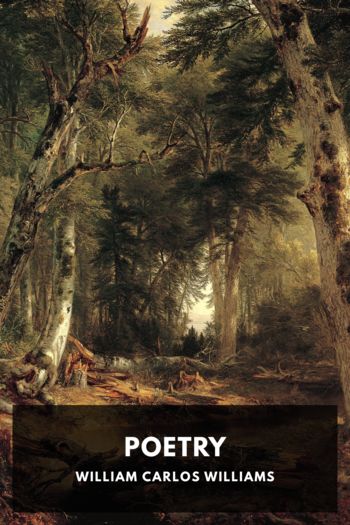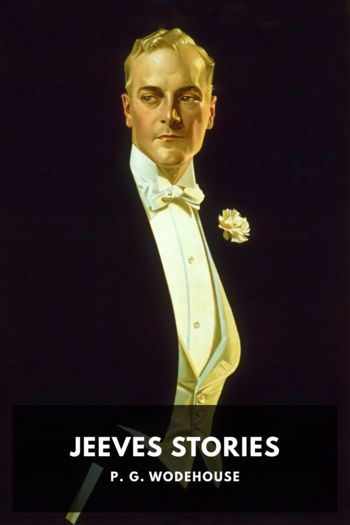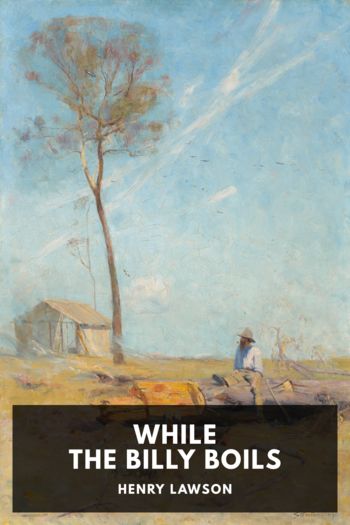
Description
The Valley of Fear is the final novel in the Sherlock Holmes series by Sir Arthur Conan Doyle. The story originally appeared over several issues of the monthly Strand Magazine in late 1914 before being published as a standalone work. While Doyle would continue to publish Sherlock Holmes short stories until 1927, The Valley of Fear remains Holmes’ final long-form appearance.
In the novel, Holmes and his assistant Watson are called to assist with an investigation into the murder of John Douglas, a man shot in his own home at point-blank range with a shotgun. As evidence is examined and witnesses within the house are questioned, Holmes uncovers holes in testimonies and a connection to a secret society that no one wishes to discuss.

Description
Perhaps best known for creating the character Fu-Manchu, Sax Rohmer is also known for his works involving the supernatural. This novel follows Robert Cairn, his father, Dr. Bruce Cairn, and their suspicion of one Antony Ferrara.
After witnessing the strange and violent death of a swan, Robert Cairn suspects that Ferrara may be involved with the death of the bird. Soon after two murders, Dr. Bruce Cairn arrives in London and warns Robert that he suspects Ferrara is using ancient Egyptian magic to accomplish his evil deeds. After a mystical attack on Robert, Dr. Cairn and his son become involved in a series of supernatural events as they work to prevent Antony Ferrara from inflicting his dark magic on more victims.
Like many of his works, Rohmer includes exotic locations in this novel; first set in London, the action soon moves to the pyramids of Egypt as the father and son duo track down Ferrara. Having received both success and notoriety from Fu-Manchu, Rohmer has been given praise for Brood of the Witch-Queen, such as when H. P. Lovecraft favorably compared it to Bram Stoker’s Dracula.

Description
Poems is an anthology of William Carlos Williams’ poetry collections, combining The Tempers (1913), Al Que Quiere! (1917), and Sour Grapes (1921). Williams is recognized as one of the foremost poets of American Modernism. In these collections a reader may perceive Williams’ contact with and subsequent growth through and away from Imagism. The poet’s work asserts a decidedly American approach to Modernism and features highly localized diction and imagery.
William Carlos Williams was born in 1883, grew up in New Jersey, and was educated in Europe and the United States. He was friends with Hilda Doolittle “H. D.” and Ezra Pound, and through these friendships was introduced to Imagism. He eventually broke with the Imagists and invested himself instead in capturing the unique diction and linguistic intermingling of the United States, while remaining committed to the concreteness that characterizes Imagism. A practising doctor, Williams included many images of bodies, sickness, and medical care in his early poems. Williams later claimed there are “no ideas but in things,” a sentiment rooted in both his contact with Imagism and his firm sense of place.
Williams continued to read and respond to expatriate and English Modernism, culminating in his long work Paterson. In his later career Williams influenced postwar literary movements, most notably the Beat Generation. He died in 1963.

Description
Published in 1919, Mr. Standfast is a thriller set in the latter half of the First World War, and the third of John Buchan’s books to feature Richard Hannay.
Richard Hannay is called back from serving in France to take part in a secret mission: searching for a German agent. Hannay disguises himself as a pacifist and travels through England and Scotland to track down the spy at the center of a web of German agents who are leaking information about the war plans. He hopes to infiltrate and feed misinformation back to Germany. His journey takes him from Glasgow to Skye, onwards into the Swiss Alps, and on to the Western Front.
During the course of his work he’s again reunited with Peter Pienaar and John Blenkiron, who both appear in Greenmantle, as well as Sir Walter Bullivant, his Foreign Office contact from The Thirty Nine Steps.
The title of the novel comes from a character in John Bunyan’s Pilgrim’s Progress to which there are many references in the book, not least of all as a codebook which Hannay uses to decipher messages from his allies.
The book finishes with a captivating description of some of the final battles of the First World War between Britain and Germany in Eastern France.

Description
Jeeves Stories is a collection of humorous short stories by P. G. Wodehouse that feature the adventures of his most famous characters, Jeeves and Wooster. Wooster is a wealthy and idle young English gentleman of the interwar era. Jeeves is his extraordinarily competent valet whose name has since become synonymous with perfect service. The stories follow Wooster in his wanderings about London, around England, and across the Atlantic to New York, with Jeeves following in his wake and striving to keep his employer well-groomed and properly presented. Along the way Jeeves must somehow also manage to extricate Wooster and his friends from the various scrapes and follies they get themselves into.
First published as early as 1915, the stories first appeared on both sides of the Atlantic in publications like The Saturday Evening Post and The Strand Magazine. They were later collected into books or reworked into novels. Though only less than 50 of Wodehouse’s over 300 short stories feature Jeeves and Wooster, they remain his most enduring characters. They’ve been copied, imitated, and featured in countless interpretations and adaptations. A century later, these stories still are as amusing and entertaining as they were when they were first published.

Description
Paradise Lost is an epic poem written by the Puritan English poet John Milton between 1658 and 1663, and published in 1667. This is a period of English history which encompasses the end of Oliver Cromwell’s Commonwealth and the restoration of the monarchy in 1660.
Perhaps reflecting some of his country’s turmoil during Milton’s life, Paradise Lost deals with revolution in Heaven by Satan and his followers against God, their defeat and banishment to Hell, and their subsequent plotting of revenge, leading ultimately to Satan beguiling Eve in Paradise to taste the fruit of the Tree of Knowledge against the explicit command of God. Milton’s vivid and poetic description of these events is both dramatic and compelling. The work gained swift acceptance and has always remained a popular and important part of English literature.
Originally published in ten books, a second edition was published in 1674 arranged into twelve books, the form in which it appears here. This Standard Ebooks edition is based on a 1910 edition edited by A. W. Verity.

Description
While the Billy Boils collates Henry Lawson’s most well known short stories of the 1890s, originally published in a variety of Australian and New Zealand newspapers—most prominently the Sydney Bulletin. Lawson presents a satirical and sometimes emotional study of frontier life in late colonial Australia, and the characters living in it.

Description
Pepys’ Diary is an incredibly frank decade-long snapshot of the life of an up and coming naval administrator in mid-17th century London. In it he describes everything from battles against the Dutch and the intrigues of court, down to the plays he saw, his marital infidelities, and the quality of the meat provided for his supper. His observations have proved invaluable in establishing an accurate record of the daily life of the people of London of that period.
Pepys eventually stopped writing his diary due to progressively worse eyesight, a condition he feared. He did consider employing an amanuensis to transcribe future entries for him, but worried that the content he wanted written would be too personal. Luckily for Pepys, his eyesight difficulties never progressed to blindness and he was able to go on to become both a Member of Parliament and the President of the Royal Society.
After Pepys’ death he left his large library of books and manuscripts first to his nephew, which was then passed on to Magdalene College, Cambridge, where it survives to this day. The diary, originally written in a shorthand, was included in this trove and was eventually deciphered in the early 19th century, and published by Lord Baybrooke in 1825. This early release censored large amounts of the text, and it was only in the 1970s that an uncensored version was published. Presented here is the 1893 edition, which restores the majority of the originally censored content but omits “a few passages which cannot possibly be printed.” The rich collection of endnotes serve to further illustrate the lives of the people Pepys meets and the state of England’s internal politics and international relations at the time.

Description
Written by William Shakespeare around 1599, The Life of Henry the Fifth, more commonly known as Henry V, chronicles the later history of King Henry the Fifth of England and his efforts during Hundred Years’ War to reclaim disputed territories in France. The play starts with Henry’s claims to be the rightful heir to the French throne and, after his invasion of France, culminates with his famous and improbable victory at the Battle of Agincourt and the negotiation of the Treaty of Troyes.
Henry V is believed to have been first performed in 1599 and first appears in a “bad” quarto in 1600, so-called because it contains a shortened version, likely unauthorized and potentially just based on a performance. This quarto was republished again in 1602 by a different printer and again in 1619. The first definitive text is the version published in the 1623 First Folio.
The play is the last part of a series of four history plays written by Shakespeare, including Richard II, Henry IV, Part 1, and Henry IV, Part 2 and many of characters like Henry (who appears as a wild young Hal in the Henry IVs), Pistol, Bardolph, and Mistress Quickly would have therefore been familiar to the audience. It contains some of Shakespeare’s most memorable lines and is often held up as a powerful portrayal of inspirational leadership.
This Standard Ebooks production is based on William George Clark and William Aldis Wright’s 1887 Victoria edition, which is taken from the Globe edition.

Description
The Charing Cross Mystery follows a young lawyer, Hetherwick, who happens to be on a train alongside a former police inspector who dies suddenly in front of him. The other man in the carriage runs off at the next stop and vanishes. Hetherwick takes it upon himself to investigate what turns out to be a murder.
J. S. Fletcher originally wrote the story in 1922 for a weekly magazine, who called it Black Money. It was published in a single volume in 1923 as The Charing Cross Mystery and immediately had to be reprinted because of its popularity.
The novel is a classic Edwardian detective novel where the plot twists and turns as more and more people become involved in the investigation, both as investigators and as suspects.

Description
The Valley of Fear is the final novel in the Sherlock Holmes series by Sir Arthur Conan Doyle. The story originally appeared over several issues of the monthly Strand Magazine in late 1914 before being published as a standalone work. While Doyle would continue to publish Sherlock Holmes short stories until 1927, The Valley of Fear remains Holmes’ final long-form appearance.
In the novel, Holmes and his assistant Watson are called to assist with an investigation into the murder of John Douglas, a man shot in his own home at point-blank range with a shotgun. As evidence is examined and witnesses within the house are questioned, Holmes uncovers holes in testimonies and a connection to a secret society that no one wishes to discuss.

Description
Perhaps best known for creating the character Fu-Manchu, Sax Rohmer is also known for his works involving the supernatural. This novel follows Robert Cairn, his father, Dr. Bruce Cairn, and their suspicion of one Antony Ferrara.
After witnessing the strange and violent death of a swan, Robert Cairn suspects that Ferrara may be involved with the death of the bird. Soon after two murders, Dr. Bruce Cairn arrives in London and warns Robert that he suspects Ferrara is using ancient Egyptian magic to accomplish his evil deeds. After a mystical attack on Robert, Dr. Cairn and his son become involved in a series of supernatural events as they work to prevent Antony Ferrara from inflicting his dark magic on more victims.
Like many of his works, Rohmer includes exotic locations in this novel; first set in London, the action soon moves to the pyramids of Egypt as the father and son duo track down Ferrara. Having received both success and notoriety from Fu-Manchu, Rohmer has been given praise for Brood of the Witch-Queen, such as when H. P. Lovecraft favorably compared it to Bram Stoker’s Dracula.

Description
Poems is an anthology of William Carlos Williams’ poetry collections, combining The Tempers (1913), Al Que Quiere! (1917), and Sour Grapes (1921). Williams is recognized as one of the foremost poets of American Modernism. In these collections a reader may perceive Williams’ contact with and subsequent growth through and away from Imagism. The poet’s work asserts a decidedly American approach to Modernism and features highly localized diction and imagery.
William Carlos Williams was born in 1883, grew up in New Jersey, and was educated in Europe and the United States. He was friends with Hilda Doolittle “H. D.” and Ezra Pound, and through these friendships was introduced to Imagism. He eventually broke with the Imagists and invested himself instead in capturing the unique diction and linguistic intermingling of the United States, while remaining committed to the concreteness that characterizes Imagism. A practising doctor, Williams included many images of bodies, sickness, and medical care in his early poems. Williams later claimed there are “no ideas but in things,” a sentiment rooted in both his contact with Imagism and his firm sense of place.
Williams continued to read and respond to expatriate and English Modernism, culminating in his long work Paterson. In his later career Williams influenced postwar literary movements, most notably the Beat Generation. He died in 1963.

Description
Published in 1919, Mr. Standfast is a thriller set in the latter half of the First World War, and the third of John Buchan’s books to feature Richard Hannay.
Richard Hannay is called back from serving in France to take part in a secret mission: searching for a German agent. Hannay disguises himself as a pacifist and travels through England and Scotland to track down the spy at the center of a web of German agents who are leaking information about the war plans. He hopes to infiltrate and feed misinformation back to Germany. His journey takes him from Glasgow to Skye, onwards into the Swiss Alps, and on to the Western Front.
During the course of his work he’s again reunited with Peter Pienaar and John Blenkiron, who both appear in Greenmantle, as well as Sir Walter Bullivant, his Foreign Office contact from The Thirty Nine Steps.
The title of the novel comes from a character in John Bunyan’s Pilgrim’s Progress to which there are many references in the book, not least of all as a codebook which Hannay uses to decipher messages from his allies.
The book finishes with a captivating description of some of the final battles of the First World War between Britain and Germany in Eastern France.

Description
Jeeves Stories is a collection of humorous short stories by P. G. Wodehouse that feature the adventures of his most famous characters, Jeeves and Wooster. Wooster is a wealthy and idle young English gentleman of the interwar era. Jeeves is his extraordinarily competent valet whose name has since become synonymous with perfect service. The stories follow Wooster in his wanderings about London, around England, and across the Atlantic to New York, with Jeeves following in his wake and striving to keep his employer well-groomed and properly presented. Along the way Jeeves must somehow also manage to extricate Wooster and his friends from the various scrapes and follies they get themselves into.
First published as early as 1915, the stories first appeared on both sides of the Atlantic in publications like The Saturday Evening Post and The Strand Magazine. They were later collected into books or reworked into novels. Though only less than 50 of Wodehouse’s over 300 short stories feature Jeeves and Wooster, they remain his most enduring characters. They’ve been copied, imitated, and featured in countless interpretations and adaptations. A century later, these stories still are as amusing and entertaining as they were when they were first published.

Description
Paradise Lost is an epic poem written by the Puritan English poet John Milton between 1658 and 1663, and published in 1667. This is a period of English history which encompasses the end of Oliver Cromwell’s Commonwealth and the restoration of the monarchy in 1660.
Perhaps reflecting some of his country’s turmoil during Milton’s life, Paradise Lost deals with revolution in Heaven by Satan and his followers against God, their defeat and banishment to Hell, and their subsequent plotting of revenge, leading ultimately to Satan beguiling Eve in Paradise to taste the fruit of the Tree of Knowledge against the explicit command of God. Milton’s vivid and poetic description of these events is both dramatic and compelling. The work gained swift acceptance and has always remained a popular and important part of English literature.
Originally published in ten books, a second edition was published in 1674 arranged into twelve books, the form in which it appears here. This Standard Ebooks edition is based on a 1910 edition edited by A. W. Verity.

Description
While the Billy Boils collates Henry Lawson’s most well known short stories of the 1890s, originally published in a variety of Australian and New Zealand newspapers—most prominently the Sydney Bulletin. Lawson presents a satirical and sometimes emotional study of frontier life in late colonial Australia, and the characters living in it.

Description
Pepys’ Diary is an incredibly frank decade-long snapshot of the life of an up and coming naval administrator in mid-17th century London. In it he describes everything from battles against the Dutch and the intrigues of court, down to the plays he saw, his marital infidelities, and the quality of the meat provided for his supper. His observations have proved invaluable in establishing an accurate record of the daily life of the people of London of that period.
Pepys eventually stopped writing his diary due to progressively worse eyesight, a condition he feared. He did consider employing an amanuensis to transcribe future entries for him, but worried that the content he wanted written would be too personal. Luckily for Pepys, his eyesight difficulties never progressed to blindness and he was able to go on to become both a Member of Parliament and the President of the Royal Society.
After Pepys’ death he left his large library of books and manuscripts first to his nephew, which was then passed on to Magdalene College, Cambridge, where it survives to this day. The diary, originally written in a shorthand, was included in this trove and was eventually deciphered in the early 19th century, and published by Lord Baybrooke in 1825. This early release censored large amounts of the text, and it was only in the 1970s that an uncensored version was published. Presented here is the 1893 edition, which restores the majority of the originally censored content but omits “a few passages which cannot possibly be printed.” The rich collection of endnotes serve to further illustrate the lives of the people Pepys meets and the state of England’s internal politics and international relations at the time.

Description
Written by William Shakespeare around 1599, The Life of Henry the Fifth, more commonly known as Henry V, chronicles the later history of King Henry the Fifth of England and his efforts during Hundred Years’ War to reclaim disputed territories in France. The play starts with Henry’s claims to be the rightful heir to the French throne and, after his invasion of France, culminates with his famous and improbable victory at the Battle of Agincourt and the negotiation of the Treaty of Troyes.
Henry V is believed to have been first performed in 1599 and first appears in a “bad” quarto in 1600, so-called because it contains a shortened version, likely unauthorized and potentially just based on a performance. This quarto was republished again in 1602 by a different printer and again in 1619. The first definitive text is the version published in the 1623 First Folio.
The play is the last part of a series of four history plays written by Shakespeare, including Richard II, Henry IV, Part 1, and Henry IV, Part 2 and many of characters like Henry (who appears as a wild young Hal in the Henry IVs), Pistol, Bardolph, and Mistress Quickly would have therefore been familiar to the audience. It contains some of Shakespeare’s most memorable lines and is often held up as a powerful portrayal of inspirational leadership.
This Standard Ebooks production is based on William George Clark and William Aldis Wright’s 1887 Victoria edition, which is taken from the Globe edition.

Description
The Charing Cross Mystery follows a young lawyer, Hetherwick, who happens to be on a train alongside a former police inspector who dies suddenly in front of him. The other man in the carriage runs off at the next stop and vanishes. Hetherwick takes it upon himself to investigate what turns out to be a murder.
J. S. Fletcher originally wrote the story in 1922 for a weekly magazine, who called it Black Money. It was published in a single volume in 1923 as The Charing Cross Mystery and immediately had to be reprinted because of its popularity.
The novel is a classic Edwardian detective novel where the plot twists and turns as more and more people become involved in the investigation, both as investigators and as suspects.